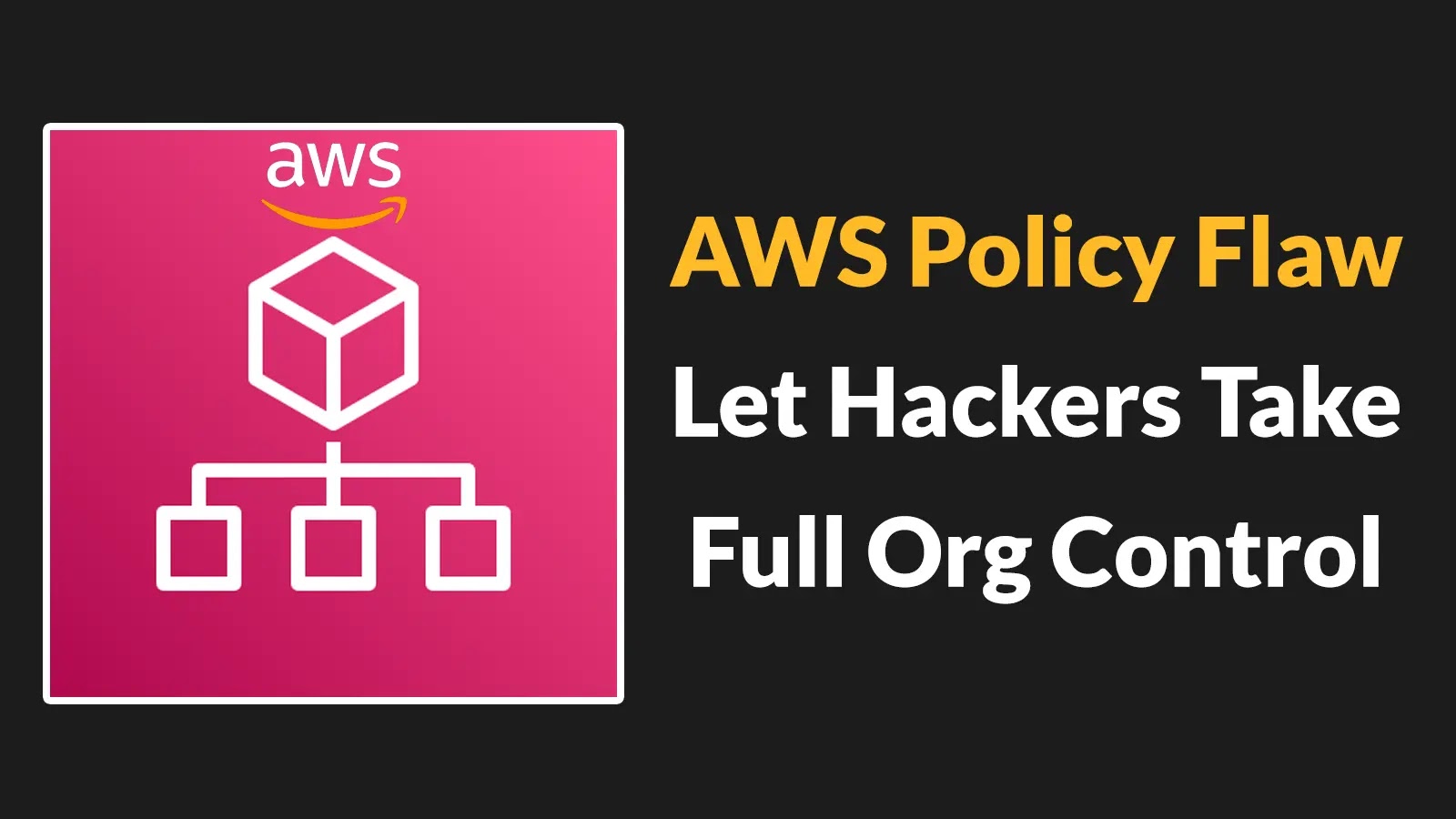
AWS Organizations Mis-scoped Managed Policy Let Hackers To Take Full AWS Organization Control
A Critical Flaw in AWS Organizations: Understanding the Full Control Takeover Risk
In the complex landscape of cloud security, even seemingly minor misconfigurations can open doors to catastrophic breaches. A recent discovery has sent ripples through the Amazon Web Services (AWS) ecosystem, revealing a critical vulnerability that could empower attackers to seize complete control over entire multi-account AWS environments. This isn’t just about a single compromised account; it’s about a potential, widespread organizational takeover, threatening the very core of cloud security best practices.
This post delves into the specifics of this vulnerability, originating from a mis-scoped managed policy within AWS Organizations, and provides actionable insights on how to mitigate its risks. Our goal is to equip IT professionals, security analysts, and developers with the knowledge needed to safeguard their AWS infrastructure effectively.
The Vulnerability Explained: Mis-scoped Managed Policy in AmazonGuardDutyFullAccess
The heart of this critical flaw lies within a specific AWS managed policy: AmazonGuardDutyFullAccess version 1. While managed policies are designed to simplify permission management, a subtle mis-scoping within this particular policy creates a significant privilege escalation vector. Traditionally, compromising a single member account within an AWS Organization would grant an attacker access primarily within that account’s boundaries.
However, this vulnerability shatters that assumption. The flaw enables an attacker, after compromising a member account within an AWS Organization, to escalate their privileges far beyond the initial compromise. Instead of being confined to the member account, they can achieve full control over the entire AWS Organization. This includes gaining access to the management account, creating new accounts, modifying billing information, and potentially even deleting or modifying resources across all linked accounts. The implications are severe, extending to potential control of critical infrastructure and sensitive data.
Impact and Severity: From Member Account to Full Organizational Control
The impact of this mis-scoped policy is profound. Imagine a scenario where a relatively minor security incident, such as a phishing attack compromising credentials for a developer’s AWS account, could cascade into a full organizational breach. The attacker would not only gain access to the developer’s resources but, leveraging this vulnerability, could then:
- Assume administrative roles within the organization’s management account.
- Create new AWS accounts under the organization’s umbrella.
- Modify, isolate, or delete existing AWS accounts within the organization.
- Access and potentially exfiltrate data from any account within the organization.
- Tamper with billing and financial controls.
Such a compromise represents a worst-case scenario for any organization leveraging AWS Organizations for its multi-account strategy. This vulnerability essentially turns a single point of failure into a gateway for complete infrastructure compromise.
Remediation Actions: Securing Your AWS Organization
Addressing this critical vulnerability requires immediate and decisive action. Here’s a set of essential remediation steps:
- Review and Update Managed Policies: Immediately identify and review all instances where the
AmazonGuardDutyFullAccesspolicy is in use within your AWS Organization. Prioritize updating from version 1 to the latest version of the policy. Newer versions typically include necessary security hardening and address past vulnerabilities. - Principle of Least Privilege: Reinforce and strictly adhere to the principle of least privilege across all AWS accounts and IAM roles. Ensure that no user or role has more permissions than are absolutely necessary to perform their required tasks. This granular approach limits the blast radius of any potential compromise.
- Regular Security Audits: Conduct frequent and thorough security audits of your IAM policies, especially those applied at the organizational level or to critical accounts. Utilize AWS Identity and Access Management (IAM) Access Analyzer to identify unintended access and potential policy misconfigurations.
- Multi-Factor Authentication (MFA): Enforce MFA for all AWS users, especially for root accounts and administrative users in the management account. MFA significantly enhances security by requiring an additional verification factor beyond just a password.
- Monitor CloudTrail Logs: Continuously monitor AWS CloudTrail logs for unusual activity, especially for API calls related to IAM policy modifications, user creations, or organizational changes. Set up alerts for suspicious patterns that could indicate a compromise.
- GuardDuty and Security Hub: Ensure AWS GuardDuty is enabled across all accounts in your organization for continuous threat detection. Integrate GuardDuty findings with AWS Security Hub for centralized security posture management and actionable insights.
Tools for Detection and Mitigation
Leveraging the right tools can significantly aid in detecting misconfigurations and enhancing your AWS security posture. Here’s a table of useful resources:
| Tool Name | Purpose | Link |
|---|---|---|
| AWS IAM Access Analyzer | Identifies resources shared with external entities and helps refine access policies. | https://aws.amazon.com/iam/features/access-analyzer/ |
| AWS CloudTrail | Logs and continuously monitors account activity and API usage. | https://aws.amazon.com/cloudtrail/ |
| AWS Config | Assesses, audits, and evaluates the configurations of your AWS resources. | https://aws.amazon.com/config/ |
| AWS GuardDuty | Intelligent threat detection service that monitors for malicious activity and unauthorized behavior. | https://aws.amazon.com/guardduty/ |
| AWS Security Hub | Provides a comprehensive view of your security posture across your AWS accounts. | https://aws.amazon.com/security-hub/ |
Conclusion
The discovery of this mis-scoped managed policy serving as an escalation vector within AWS Organizations underscores the ongoing need for vigilance and proactive security measures in cloud environments. Even standard managed policies, meant to simplify operations, can harbor hidden risks if not meticulously reviewed and understood. Organizations must prioritize immediate remediation actions, including policy updates and strict adherence to the principle of least privilege.
By understanding the mechanisms of such vulnerabilities and implementing robust security practices, organizations can significantly reduce their attack surface and protect their critical cloud assets from full organizational takeover attempts. Proactive security, continuous monitoring, and a commitment to best practices are the cornerstones of a resilient AWS security posture.





